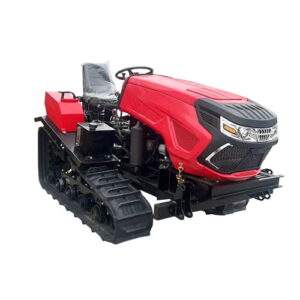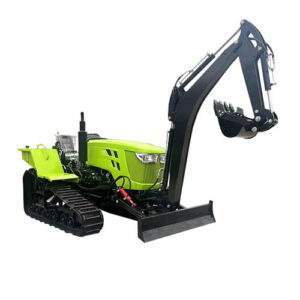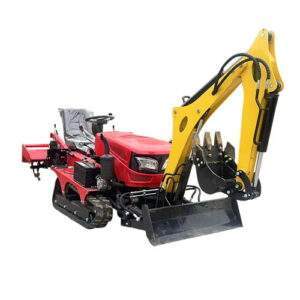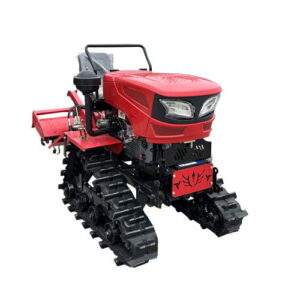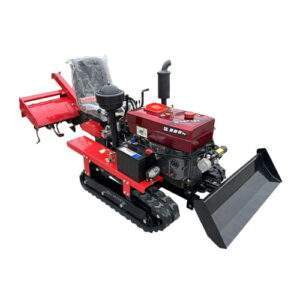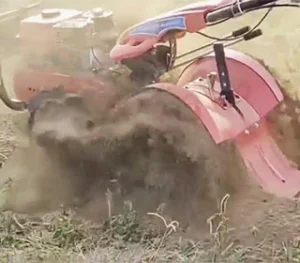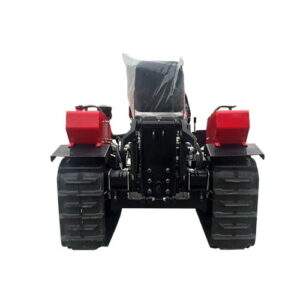How Modern Farm Tractors Revolutionize Crop Production
Introduction
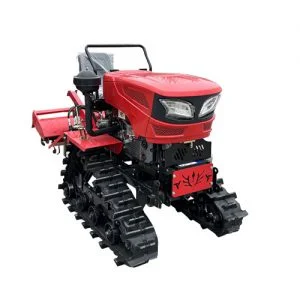
In the ever-evolving landscape of agriculture, one technological marvel stands tall: the modern farm tractor. These powerful machines have transformed the way we cultivate, plant, and harvest crops, revolutionizing crop production worldwide. In this comprehensive guide, we’ll delve into the various aspects of how farm tractors have reshaped agriculture, from increased efficiency to precision farming techniques.
The Evolution of Farm Tractors
The evolution of farm tractors is a fascinating journey that parallels the advancements in agricultural practices and the mechanization of farming. Beginning in the late 19th century, farm tractors have continually evolved, driven by the need to increase efficiency, reduce labor, and meet the demands of a growing population. Let’s delve deeper into the key milestones that have shaped the development of farm tractor technology:
- Steam-Powered Era (Late 19th to Early 20th Century): The earliest farm tractors were powered by steam engines and resembled locomotives more than the sleek machines we recognize today. These steam-powered behemoths revolutionized agriculture by replacing animal power with mechanical power, significantly increasing the amount of land that could be cultivated.
- Gasoline-Powered Tractors (Early to Mid-20th Century): The introduction of gasoline-powered engines in the early 20th century marked a significant advancement in farm tractor technology. Manufacturers such as Ford, John Deere, and International Harvester pioneered the development of lightweight, affordable tractors that could be mass-produced. These tractors became ubiquitous on farms across the world, transforming agricultural practices and increasing productivity.
- Diesel Engines and Hydraulic Systems (Mid to Late 20th Century): The mid-20th century saw the widespread adoption of diesel engines in agricultural tractors, offering improved fuel efficiency and torque compared to gasoline engines. Additionally, the integration of hydraulic systems revolutionized tractor functionality, enabling implements to be raised, lowered, and controlled with precision. This era also witnessed the emergence of specialized tractors for various tasks such as plowing, planting, and harvesting.
- Electronics and Computerization (Late 20th to 21st Century): The latter half of the 20th century brought about significant advancements in electronics and computerization, leading to the integration of sophisticated technology into agricultural tractors. Electronic controls replaced mechanical linkages, allowing for greater precision and automation in tractor operation. GPS-guided systems emerged, enabling farmers to perform tasks with unprecedented accuracy and efficiency, leading to the era of precision agriculture.
- The Era of Connectivity and Smart Farming (21st Century): In recent years, farm tractors have become increasingly connected, leveraging data analytics, telematics, and the Internet of Things (IoT) to optimize performance and decision-making. Tractors are now equipped with sensors that monitor soil conditions, crop health, and equipment status in real time, allowing farmers to make data-driven decisions to maximize yields and minimize inputs.
Enhanced Efficiency Through Mechanization
Mechanization lies at the heart of the farm tractor revolution. By mechanizing tasks that were once labor-intensive and time-consuming, modern tractors have significantly boosted efficiency on the farm. We’ll examine how features such as automated steering, hydraulic systems, and variable transmission contribute to maximizing productivity while minimizing resource usage.
Precision Farming with Farm Tractors
Precision farming represents a paradigm shift in agriculture, and agricultural tractors play a central role in its implementation. Through the integration of GPS technology, sensors, and data analytics, modern tractors enable farmers to precisely manage inputs such as water, fertilizer, and pesticides. This section explores how precision farming techniques optimize yields, reduce environmental impact, and ensure sustainable agricultural practices.
Empowering Farmers with Versatility
Versatility is a hallmark of modern agricultural tractors. With a plethora of attachments and implements available, these machines can perform a wide range of tasks throughout the farming calendar. Whether it’s plowing, seeding, spraying, or harvesting, agricultural tractors offer the flexibility to adapt to diverse cropping systems and field conditions.
The Economic Impact of Farm Tractors
Beyond their on-field performance, agricultural tractors have profound economic implications for farmers and rural communities. This section delves into the economic benefits of owning and operating modern tractors, including increased profitability, cost savings, and enhanced market access. Additionally, we’ll explore how the mechanization of agriculture influences employment dynamics and income distribution in rural areas.
Example table of features and specifications of modern farm tractors:
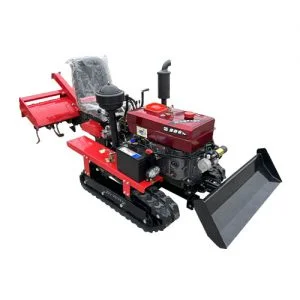
| Feature | Description |
|---|---|
| Engine Power | Horsepower rating indicating the tractor’s engine strength |
| Transmission | Type of transmission system (e.g., manual, CVT, powershift) |
| Hitch System | Compatibility with various implements and attachments |
| Steering Technology | Steering system employed (e.g., manual, hydraulic, GPS) |
| Tire Configuration | Tire size and configuration for optimal traction |
| Hydraulic Capacity | Maximum hydraulic flow rate and lifting capacity |
| Cab Comfort | Amenities such as air conditioning, seating, and controls |
| Connectivity | Integration with precision farming and telematics systems |
| Safety Features | Systems for rollover protection, visibility, and alerts |
Conclusion
In conclusion, the advent of modern farm tractors represents a watershed moment in the history of agriculture. These versatile, high-powered machines have not only increased productivity and efficiency but have also paved the way for sustainable farming practices. As we look to the future, it’s clear that farm tractors will continue to play a central role in shaping the agricultural landscape, driving innovation, and meeting the global demand for food security.
FAQ
Q:What is the average lifespan of a modern farm tractor?
A:Modern farm tractors are built to withstand years of rigorous use, with an average lifespan ranging from 10 to 20 years depending on maintenance and usage patterns.
Q:How do farm tractors contribute to sustainability?
A:Farm tractors promote sustainability through precision farming practices that optimize resource utilization, minimize chemical inputs, and reduce soil erosion and compaction.
Q:Are modern farm tractors easy to operate?
A:While modern tractors incorporate advanced technology, manufacturers prioritize user-friendly interfaces and intuitive controls to ensure ease of operation for farmers of all skill levels.

